The town of Florence
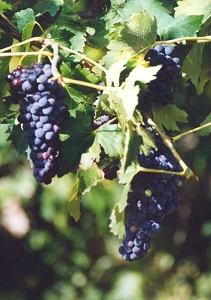
Chianti
Florence, which has a population of some 400,000 inhabitants, lies on tr banks of the River Arno, in a valley surrounded by hills. Its industry and craft businesses, commercial and cultural links, artistic scene and scientific concerns make it a lively city. Given its central position in the Italian peninsula, it is on the main national railway lines and is connected to many major Italian an European cities. Moreover, Florence`: Amerigo Vespucci Airport is just five kilometres from the city centre and served by various domestic and international airlines.
The history of the city dates back tc the first century BC, when Florence was founded by the Romans. In the Middle Ages, after a period of decline during the "dark ages", the city began to flourish again under Carolingian rule, reaching highpoints of civilization between the 11th and 15th centuries when, as a free Comune, it managed to maintain a happy balance between the authority of the Emperor: and that of the Popes and to weather the turmoil ensuing from the intestine struggles between the Guelphs and the Ghibellines. In the 15th century it cam under the sway of the Medici, who subsequently became the Grand Dukes of Tuscany. This period, known as the Renaissance, marked the peak of the city`s cultural, artistic, political and economic splendour. The Medici were suceeedec in the 18th century, by the Grand Dukes of Lorraine, who governed until the unification of the peninsula in 1860. From 1865 to 1871 Florence was the capital of the newly formed Kingdom of Italy
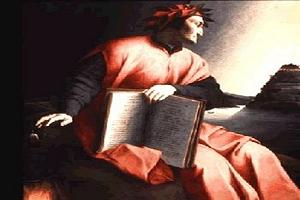
Dante
Florence has an exceptional artistic heritage that bears marvellous testimony to its centuries-old civilization. Figures of crucial importance for Western art were born in or around the city - artists like Cimabue and Giotto, the fathers of Italian painting; Arnolfo di Cambio and Andrea Pisano, who broke new ground in architecture and sculpture; Brunelleschi, Donatello and Masaccio, who initiated the Renaissance; Lorenzo Qhiberti and the Delia Robbia family; Filippo Lippi and Fra Angelico; Botticelli and Paolo Uccello, and the universal
geniuses Leonardo da Vinci and Michelangelo. Their works, together with those of generations of artists leading right up to the 20th century, can be found in the city`s many museums. The most famous of them all is the Uffizi, one of the finest art galleries in the world, but there are also many other important and much-visited museums: the Palatine Gallery in Palazzo Pitti, which houses the paintings of the "golden age"; the Bargello National Museum, housed in a medieval palace and containing celebrated Renaissance sculptures; the Museum of San Marco, a convent frescoed by the painter Beato Angelico; the Accademia, the Medici Chapels and Casa Buonarroti; the Bardini, Home and Stibbert Museums, the Gallery of Modern Art, the Museo dell`Opera del Duomo, the Silver Museum and the Opificio delle Pietre Dure.
The city has a number of celebrated monuments marking the various phases of Florence`s artistic history: the Baptistery with its mosaics; the Cathedral, a majestic example of Gothic architecture topped by Filippo Brunelleschi`s dome, a masterpiece of Renaissance architecture; medieval churches decorated with fresco cycles; public and private palaces like Palazzo Vecchio, Palazzo Pitti, Palazzo Medici-Riccardi and Palazzo Davanzati, built by leading architects on behalf of the city`s most eminent families. Many artistic treasures can also be found in the city`s places of worship: monasteries; refectories frescoed by important artists with depictions of the Last Supper [cenacoli); quiet, shady, cloisters; and, just outside the city, ancient country parish churches and monasteries such as the Certosa, which for centuries has housed art works of immense value.
In the Archaeology Museum, besides an important Egyptian section, there is a rich collection charting the Etruscan civilization.

Firenze - Calcio Storico
Florence is the city where the Italian language first took root, thanks to the important work of the Florentine poet Dante Alighieri (1265-1321). Celebrated writers like Petrarch and Boccaccio were also born or worked here. In the humanist period the city was the scene of lively philosophical debate, and great emphasis was placed on classical culture. At the same time, the work of Machiavelli marked the advent of modern political science.
One very important figure in the sciences was Galileo Galilei, who established modern experimental science. There has been a university in Florence since the Middle Ages, and today it has dozens of specialist institutes. Attracted by its culture, foreign students come here from around the world, many to study Italian or the history of art. This is all part of Florence`s legacy, which is also reflected in the many museums of scientific interest, such as the Museum of the History of Science and the various sections of the university`s Natural History Museum. Vast collections of books and manuscripts are housed in the Central National Library and in other historic libraries such as the Mediceo-Laurenziana, the Riccardiana and the Marucelliana. The state and council archives also contain invaluable collections of documents.
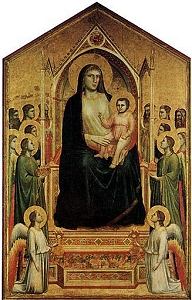
` Madonna di Giotto `
Various important events, some of international importance, take place in Florence in the course of the year. In the city that produced modern melodrama, there is the long-established and world-renowned Maggio Musicale Fiorentino, a festival of classical music, opera and ballet held in spring. The season of opera and symphonic music at the Teatro Comunale is also very important. The city also plays host to a number of important international fashion fairs: Pitti Immagine, Pitti Uomo, Pitti Bimbo and Pitti Filati take place twice a year in the exhibition centre of the Fortezza da Basso. Florence also stages a number of traditional events dating back centuries. One of these is Calcio in Costume, a medieval form of football in period dress; it now takes the form of a competition between the city`s four historic neighbourhoods, organized in three games played in June. The 24th of the same month is the feast day of St John, the patron saint of the city, during which there is a spectacular firework display. Another important and very ancient tradition is the Scoppio del Carro ("Explosion of the Cart") on Easter Sunday morning. A cart pulled by white oxen processes through the city centre, coming to a halt in front of the cathedral, where its load of crackers and fireworks are then set off.
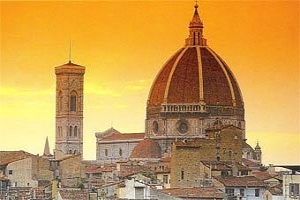
Florence
Florence is famous for the elegance and taste of its classy craft products, the legacy of a centuries-old tradition. These range from pleasing and highly original clothing accessories and furnishings made from straw, a typical Florentine craft activity, to top-quality, meticulously made leather goods, ceramics and glassware, plus a host of items in wood and metal, including furniture, trinkets and any number of other attractive objects for all ages, tastes and pockets. Florence also produces some very graceful and original clothes, and is also well-known for its linens and fine embroidery. And in the city where Benvenuto Cellini was born, there is no shortage of silver and gold-work, jewellery and filigree, and typical mosaics made from semi-precious stones. Florence also has a lively antiques trade in both small and large items.
Way back in the 13th century travellers were already praising Florence`s pleasing and comfortable hostelries. The city now has almost 400 hotels of various categories, which can provide accommodation for about 30.000 visitors, besides various cheaper options such as campsites and youth hostels. There are also innumerable restaurants and trattorias in the city centre and the surrounding hills, offering simple, healthy traditional fare. The local cuisine is accompanied by Tuscany`s justly famous wines from the Chianti and other nearby areas: tasty, full-bodied reds, softer whites, sweet dessert wines and vin santo. There are also many restaurants in the city and surrounding area that serve international cuisine .... from `An invitation to Florence ( Apt - Florence )
Our most requested apartments in the Florence historical centre:
 Holiday apartments in pretty villa on the southern outskirts of Florence, in the vicinity of Piazzale Michelangelo. Accommodation for groups of 4/6/8/10/12 people. Air conditioning, Internet connection. Just a few minutes from Florence historical centre.
More details
Holiday apartments in pretty villa on the southern outskirts of Florence, in the vicinity of Piazzale Michelangelo. Accommodation for groups of 4/6/8/10/12 people. Air conditioning, Internet connection. Just a few minutes from Florence historical centre.
More details
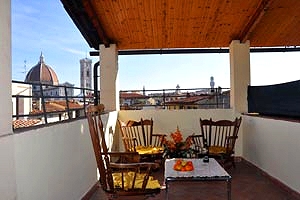 Beautiful apartment sleeping 6+2 in Florence historic centre, at a stone`s throw from Santa Maria Novella railway station. Air conditioning, Internet connection and panoramic balcony with view over the Duomo and the Medici Chapels.
More details
Beautiful apartment sleeping 6+2 in Florence historic centre, at a stone`s throw from Santa Maria Novella railway station. Air conditioning, Internet connection and panoramic balcony with view over the Duomo and the Medici Chapels.
More details
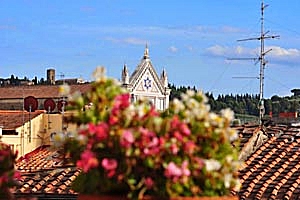 Apartment sleeping 2+1 in the heart of Florence historic centre, in the district of Santa Croce. Panoramic balcony with view over the basilica of Santa Croce, air conditioning, Internet connection, close to the most important Florentine monuments.
More details
Apartment sleeping 2+1 in the heart of Florence historic centre, in the district of Santa Croce. Panoramic balcony with view over the basilica of Santa Croce, air conditioning, Internet connection, close to the most important Florentine monuments.
More details
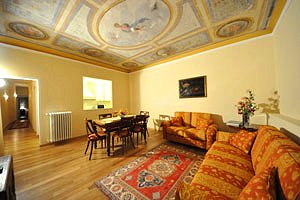 Apartment in the historical centre of Florence a few steps away from the Accademia Gallery. Nearby Piazza Duomo, Piazza Signoria, the Uffizi Gallery . 5+2 beds, Internet Connection and air conditioning.
More details
Apartment in the historical centre of Florence a few steps away from the Accademia Gallery. Nearby Piazza Duomo, Piazza Signoria, the Uffizi Gallery . 5+2 beds, Internet Connection and air conditioning.
More details





 Holiday apartments in pretty villa on the southern outskirts of Florence, in the vicinity of Piazzale Michelangelo. Accommodation for groups of 4/6/8/10/12 people. Air conditioning, Internet connection. Just a few minutes from Florence historical centre.
More details
Holiday apartments in pretty villa on the southern outskirts of Florence, in the vicinity of Piazzale Michelangelo. Accommodation for groups of 4/6/8/10/12 people. Air conditioning, Internet connection. Just a few minutes from Florence historical centre.
More details
 Beautiful apartment sleeping 6+2 in Florence historic centre, at a stone`s throw from Santa Maria Novella railway station. Air conditioning, Internet connection and panoramic balcony with view over the Duomo and the Medici Chapels.
More details
Beautiful apartment sleeping 6+2 in Florence historic centre, at a stone`s throw from Santa Maria Novella railway station. Air conditioning, Internet connection and panoramic balcony with view over the Duomo and the Medici Chapels.
More details
 Apartment sleeping 2+1 in the heart of Florence historic centre, in the district of Santa Croce. Panoramic balcony with view over the basilica of Santa Croce, air conditioning, Internet connection, close to the most important Florentine monuments.
More details
Apartment sleeping 2+1 in the heart of Florence historic centre, in the district of Santa Croce. Panoramic balcony with view over the basilica of Santa Croce, air conditioning, Internet connection, close to the most important Florentine monuments.
More details
 Apartment in the historical centre of Florence a few steps away from the Accademia Gallery. Nearby Piazza Duomo, Piazza Signoria, the Uffizi Gallery . 5+2 beds, Internet Connection and air conditioning.
More details
Apartment in the historical centre of Florence a few steps away from the Accademia Gallery. Nearby Piazza Duomo, Piazza Signoria, the Uffizi Gallery . 5+2 beds, Internet Connection and air conditioning.
More details







